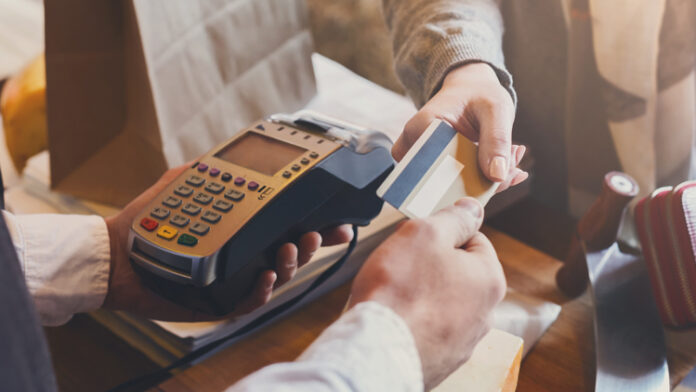
One of the most difficult difficulties facing internet businesses is figuring out how to collect payments online. Many times, news headlines describe businesses that have been crippled as a result of a data security incident. A large-scale assault or even a single employee misusing access to sensitive cardholder information may have disastrous consequences, regardless of how it occurs.
An organization’s database that contains cardholder information is subject to a variety of internal and external vulnerabilities. Companies who fail to protect cardholder data not only lose the trust of their consumers but may also be subjected to significant penalties for failing to comply with PCI DSS requirements and suffer additional legal consequences as well.
This article will discuss the dangers of keeping credit card information on your computer, as well as some useful suggestions for managing credit card information responsibly.
Is it possible for a merchant to store credit card information?
Yes, it is the answer.
Long story short, there are some items you can save and others you cannot store to be compliant and to guarantee that your client’s credit card information is treated safely on your website.
You should also ensure that your data is secured, and if it is, then retailers can save the following information:
- Name of the cardholder, PAN (Primary Account Number) (the 16 digit number on the front of the card)
- Date of expiration
- Service identification number (SID) (You will not find this information on the actual card.) It is housed within the magnetic stripe of the card.
Even if the data is encrypted, the following information cannot be stored:
- Sensitive authentication information (e.g., the full magnetic stripe info)
- PIN block (i.e., the PIN that has been encrypted)
- CVV/CVC (the three or four-digit code on the back of the card).
What is the risk of storing my credit card information on shopping apps and websites?
Even while stores are required to follow specific processes, this does not imply that your account information is secure. If there is a data breach and the website is hacked, you may still be at risk of being compromised. As a result, it may be prudent to err on the side of caution and refrain from keeping your credit card information.
It is possible to make online payments using digital payment gateway options, which eliminates the need to input your credit card information each time you wish to make a transaction. You can send and accept payment online with Pay.com, and the procedure does not need you to provide your credit card information.
The Risks of Keeping Credit Card Information on Online Databases
For one thing, hackers and unscrupulous insiders target databases because they are where customer records and other private corporate data are housed, making them an easy target. When hostile third parties get access to cardholder data, they can swiftly extract value, disrupt corporate operations, or create enormous financial losses.
1. Abuse of Privilege by Companies:
When workers are granted greater powers than they need to perform their job tasks, there is always the possibility that they may misuse those advantages. Using the example given above, a customer success team member whose job role involves the ability to update the contact information of customers may take advantage of excess privileges and use them to boost the account balance of a client.
Employees who leave a company are frequently forgotten by their employers when it comes to revoking their database access credentials. If the workers leave on unfavorable terms, they may be able to utilize their prior rights to cause harm or steal very valuable information.
2. Malware Attacks on Online Platforms:
Cybercriminals can get uncontrolled access to databases using SQL injections, which are used by malware to attack online sites. Because the injections can be sent through a susceptible web application or stored procedure, this is particularly risky for SaaS organizations. When the malicious statements are inserted and executed, the data saved can be accessed, copied, or otherwise modified as a result of the attacks.
SQL injection attacks are rather prevalent, even though they seem like something out of a sci-fi hacker flick. Every day, hundreds of websites become the target of these attacks.
3. Extended “Free” Trials Problem:
Companies will frequently solicit payment information in exchange for providing a “free” trial of their product or service. Everyone did this with the greatest of intentions, believing that we would remember to discontinue the trial when 30 days had passed. What many individuals are unaware of is that this saved information may be utilized to prolong the period of the service – oftentimes without the user’s knowledge or permission. If your credit card is approved for internet purchases, you will be charged for payments immediately and without notification if your card is approved.
4. Much More Impulsive Shopping
A method for increasing purchases is to save card information on applications or websites, which simplifies the process of making financial transactions. When you don’t keep your information, you have to remember to retrieve your card and enter your card information each time, which makes it more difficult to make impulse purchases and spend excessively. However, having already keyed in your credit card information creates a deadly combination for overspending.
What Makes Store Payment Apps Unsafe in the First Place?
As retail payment applications gain in popularity, they become a more attractive target for cybercriminals looking for exploits. An attacker who gains access to your account through the use of your debit card or credit card is a hacker who has gained access to your financial information.
Best Practices for Storing Payment Information in Apps and Websites:
Remember to use strong passwords for all of your online accounts, and make sure that you have two-factor authentication enabled on all of them, just as you would for your other accounts. In addition, if you must link a payment method to your account, it is better to do so with a low-limit credit card or debit card. Alternatively, try using online payments that do not keep your bank information and using it as an alternative to a bank account that you will top up with cash.











